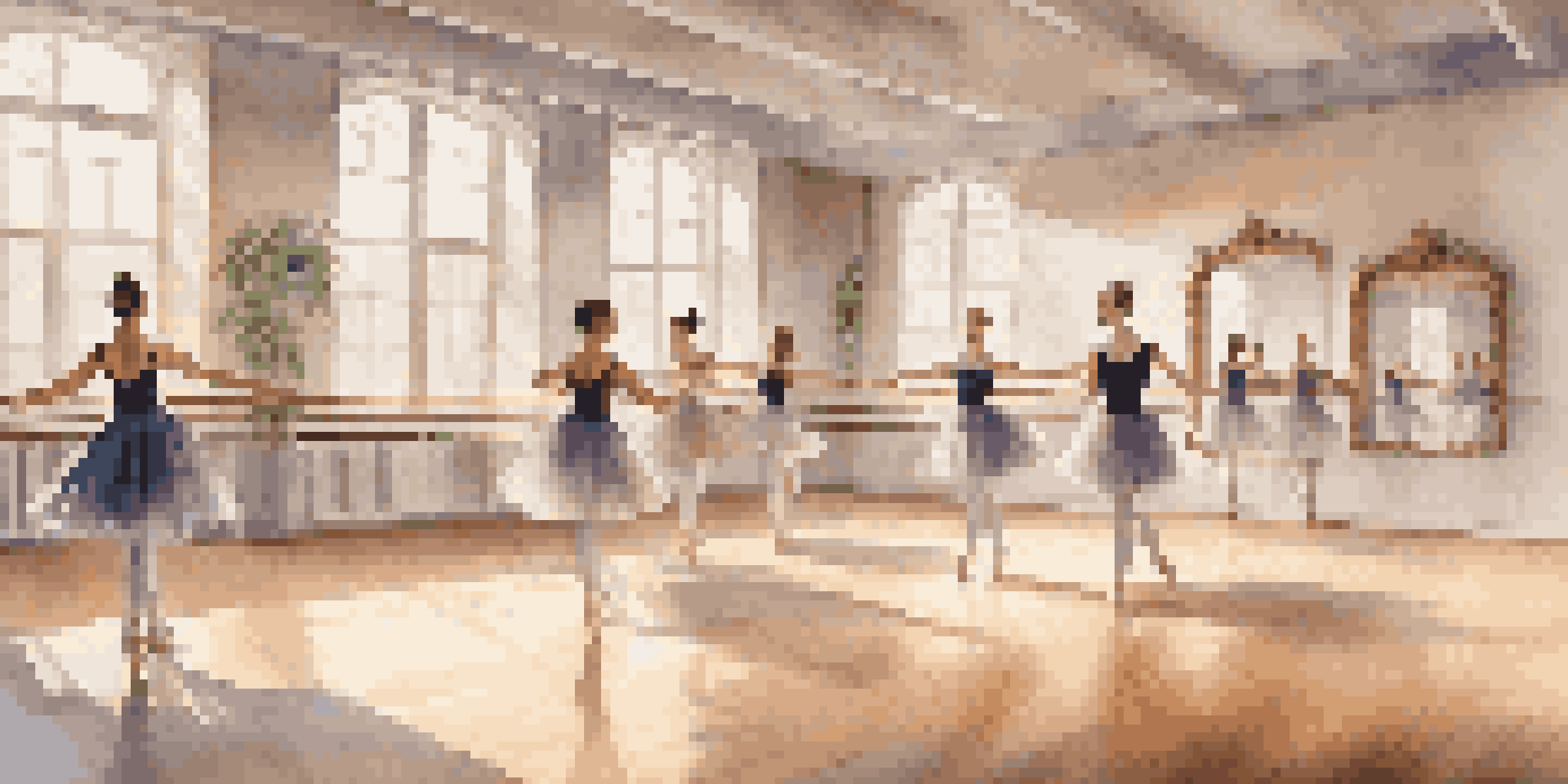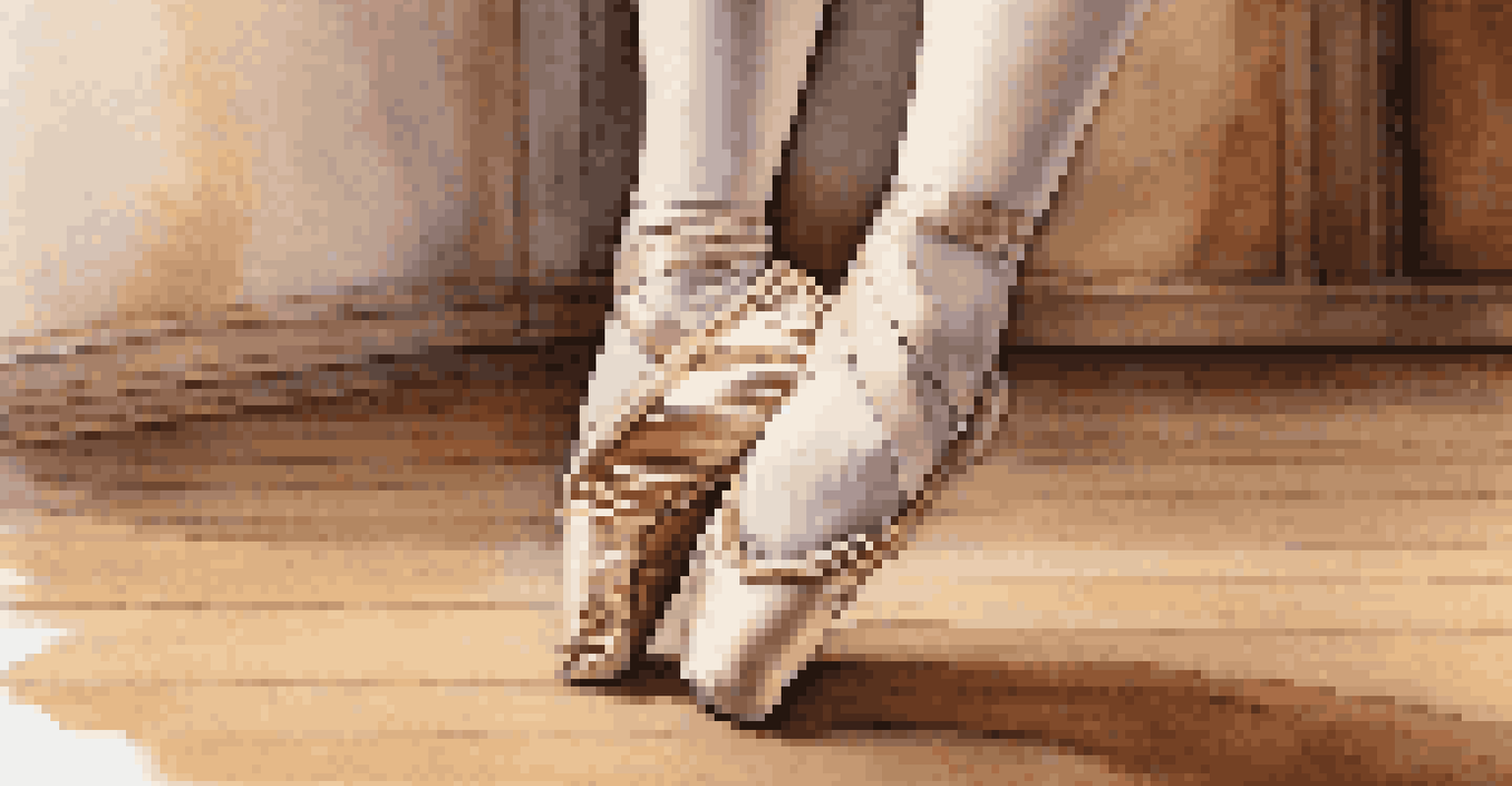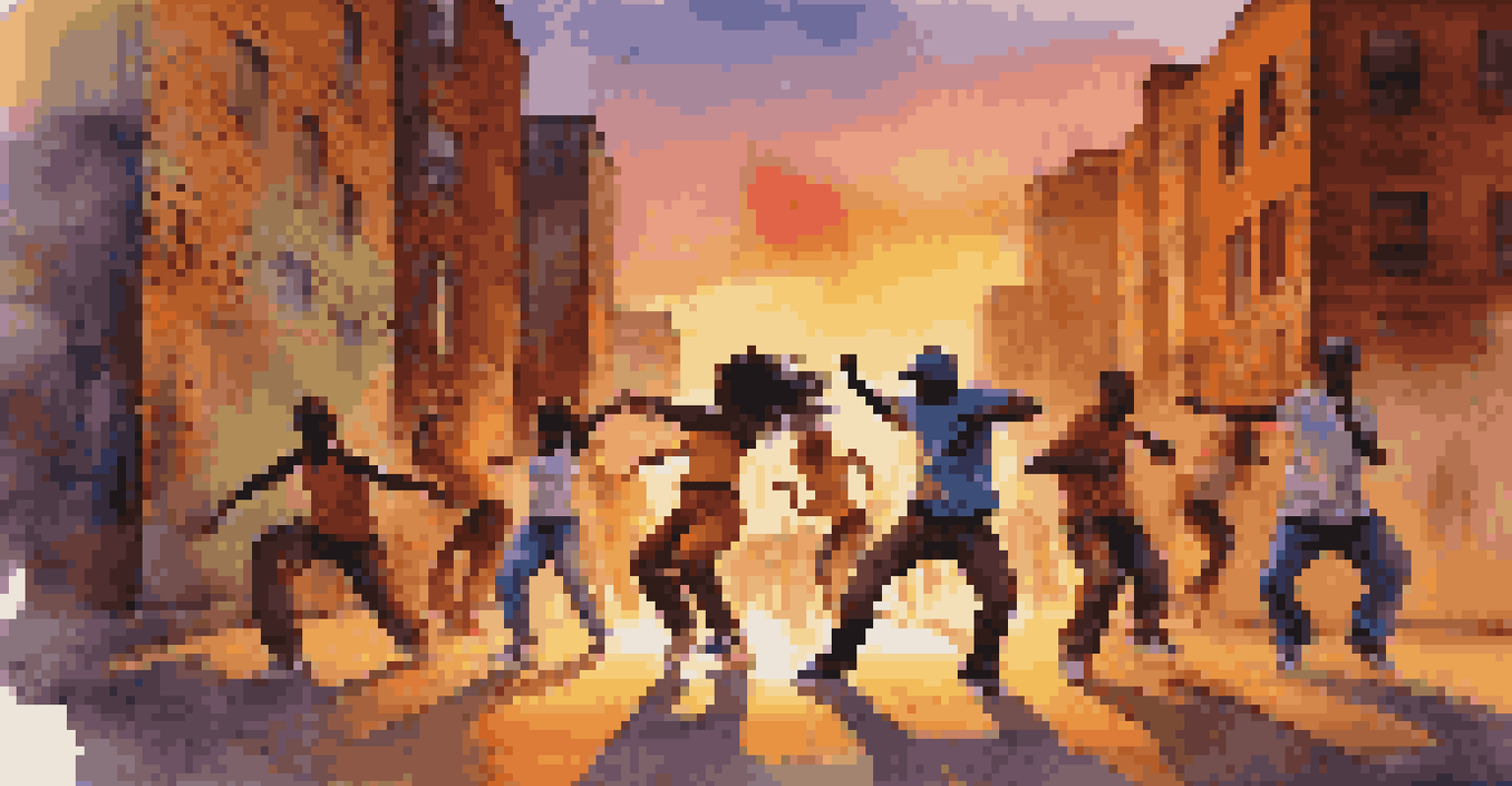Cultural Influences on Dance Notation Systems Worldwide

Understanding Dance Notation: A Brief Overview
Dance notation is a system that visually represents dance movements, similar to how musical notation represents sound. It allows dancers and choreographers to document and share their work across time and space. Various notation systems exist, each reflecting the cultural context from which they emerge.
Dance is the hidden language of the soul.
One of the most recognized systems is Labanotation, developed by Rudolf Laban in the early 20th century. This system not only captures the physical movements of dance but also incorporates elements such as dynamics and spatial orientation. Understanding these systems helps us appreciate the intricate relationship between culture and dance.
As we dive deeper, we'll explore how different cultures have uniquely influenced these notation systems, shaping the way dance is documented and taught around the globe.
The Impact of Western Culture on Dance Notation
In Western culture, the evolution of dance notation has been closely tied to the development of ballet. The 17th-century French ballet, for example, utilized a system created by Pierre Beauchamp, which laid the groundwork for modern dance notation. This system emphasized technical precision and has influenced many subsequent notation systems.

As ballet gained popularity, the need for a standardized method to teach and preserve its repertoire became crucial. This led to the refinement of notation systems, making them more accessible to dancers and choreographers alike. The influence of Western classical music also played a role in how these notations were structured.
Cultural Influence on Dance Notation
Dance notation systems are shaped by cultural contexts, with Western, Asian, and African traditions offering unique approaches to documenting movement.
Today, Western dance notation continues to evolve, incorporating new styles and movements, reflecting a culture that values both tradition and innovation.
Exploring Asian Dance Notation Systems
In contrast to Western systems, Asian dance notation often emphasizes storytelling and expression over technical precision. For instance, Indian classical dance employs a system called 'Natyashastra,' which intricately combines detailed descriptions of movements with emotional expressions and musical accompaniment. This holistic approach reflects the cultural significance of dance as a form of storytelling.
Dance is the joy of movement and the heart of life.
Moreover, Chinese dance notation, with its roots in traditional performance arts, often focuses on the fluidity and grace of movements rather than strict codification. It captures the essence of the dance, aligning closely with the philosophy of balance and harmony found in Chinese culture.
These Asian notation systems highlight the diversity in how cultures interpret and document dance, showcasing the rich tapestry of global dance traditions.
African Contributions to Dance Notation
African dance notation systems often prioritize oral traditions and community involvement, making them distinct from Western and Asian systems. For example, dance movements are frequently passed down through generations via storytelling and participation in community events. This communal approach fosters a strong connection to cultural identity.
While some African cultures have developed their own forms of notation, such as the 'Djembe notation' for drumming and movement, many still rely on oral transmission. This practice highlights the belief that dance is a living art form, constantly evolving and adapting to contemporary contexts.
Technology Transforming Dance Notation
Advancements in technology have revolutionized dance notation, making it more accessible and fostering global collaboration among dancers.
The emphasis on rhythm and expression in African dance notations reflects a deep-rooted cultural significance, making dance an integral part of social and spiritual life.
The Role of Technology in Dance Notation
In recent years, technology has revolutionized how dance notation is created and shared. Digital platforms and software now allow choreographers to document their work in real-time, making it easier for dancers to learn and replicate movements. This shift has opened doors for more global collaboration and exchange of ideas.
For instance, video recordings and interactive apps have made dance notation more accessible to a wider audience. With just a few clicks, aspiring dancers can learn complex choreography from anywhere in the world. This democratization of dance education echoes the cultural blending that is becoming more prevalent in our global society.
However, the reliance on technology also raises questions about the preservation of traditional forms of notation. As we embrace innovation, it's crucial to find a balance between modern techniques and the rich histories of dance notation systems.
Cross-Cultural Influences on Dance Notation
As globalization continues to influence the arts, dance notation systems are increasingly blending elements from various cultures. For example, contemporary dance often incorporates styles from multiple traditions, leading to the development of hybrid notation systems that reflect this diversity. This fusion encourages a richer understanding of dance as an evolving art form.
Collaborative projects, workshops, and festivals bring together dancers and choreographers from different cultural backgrounds, fostering dialogue and exchange. Through this interaction, new notation methods emerge, allowing for a more comprehensive representation of global dance practices.
Future of Dance Notation Systems
The future of dance notation will be defined by cultural exchange and technology, promoting immersive learning and preserving traditional practices.
This cross-cultural influence not only enriches dance notation but also highlights the importance of inclusivity and representation in the dance community.
The Future of Dance Notation Systems
Looking ahead, the future of dance notation systems is likely to be shaped by continued cultural exchange and advancements in technology. With the rise of virtual reality and augmented reality, we may see new forms of notation that allow for immersive learning experiences. These innovations could transform how dancers and choreographers engage with their art.
Moreover, as awareness of cultural heritage grows, there is a renewed interest in preserving traditional dance forms and their associated notation systems. Efforts to document and archive these practices are essential for ensuring that future generations can appreciate and learn from them.

Ultimately, the future of dance notation systems will be a testament to the dynamic interplay between culture, technology, and creativity, celebrating the diversity of global dance traditions.